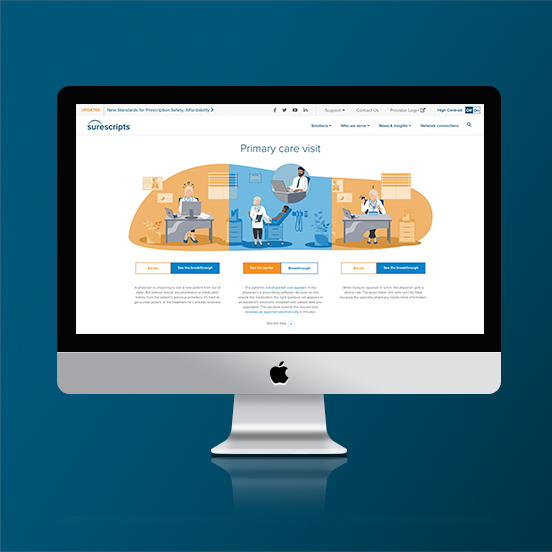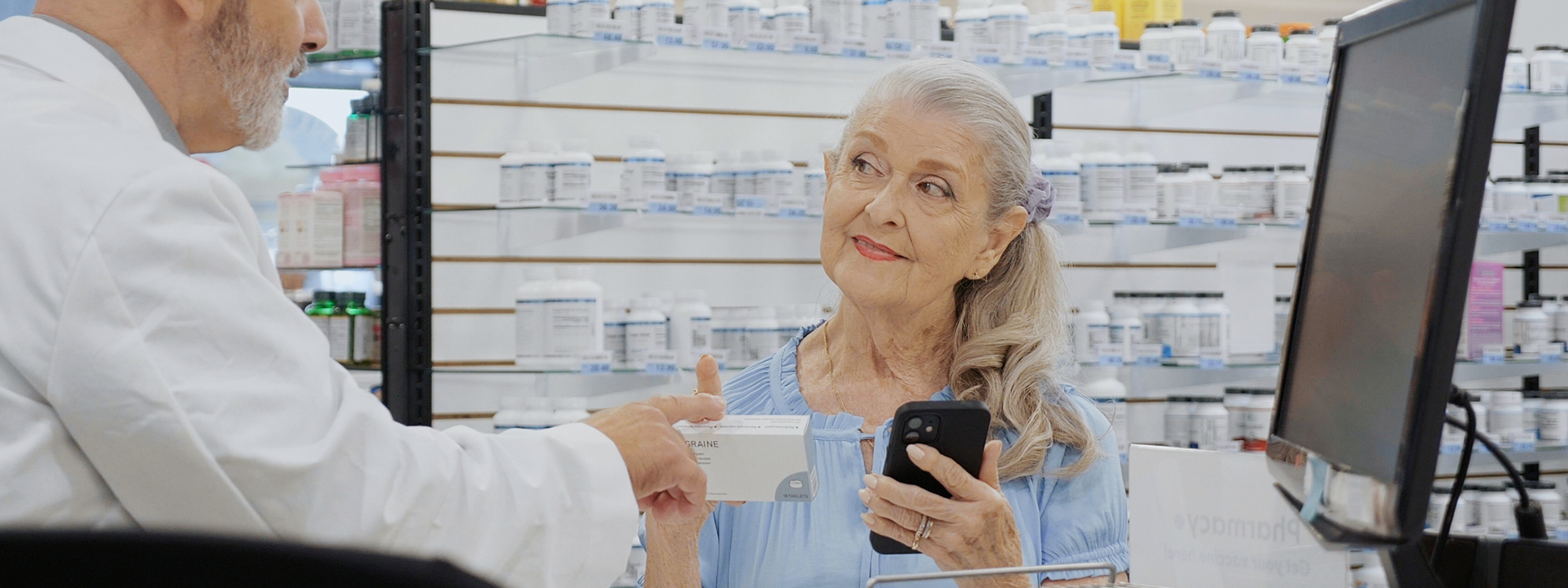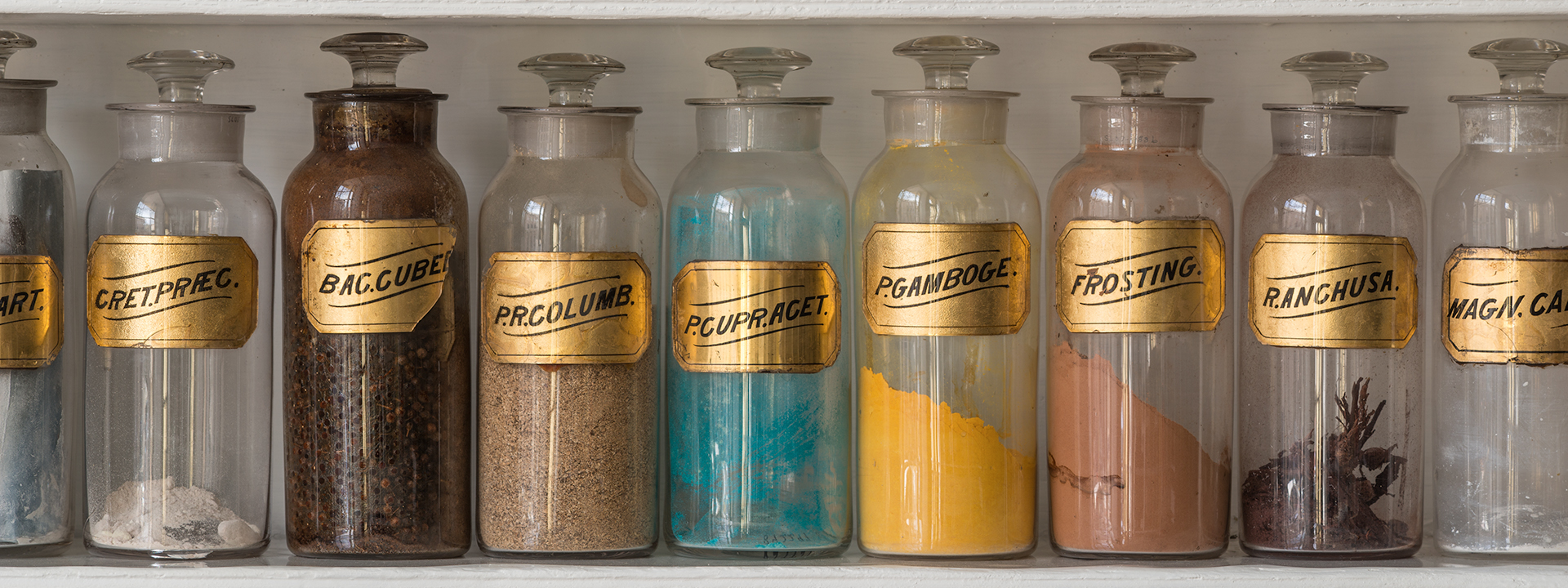Put yourself in the patient’s shoes: You really want to start feeling better, and you drive to the pharmacy, eager to pick up your medication. But there’s a problem. When it’s your turn in line, the pharmacist tells you how much it will cost. You had no idea it would be this much. What now?
You could swallow hard and pay for it. After all, your doctor prescribed the medication for a reason. Or, like many patients facing sticker shock at the pharmacy, you turn around and go home empty handed.
Too often, that’s exactly what happens.
The average pharmacist in our 2021 survey said that 10% of patients walk away without medication due to cost—but thanks to real-time insights within electronic health record (EHR) and pharmacy management systems, which show what the benefit plan covers and out-of-pocket costs, patients don’t have to go home empty handed.

12 Barriers & Breakthroughs
The scenario described above is one of a dozen barriers and breakthroughs that disrupt care, on one hand, and lead to exceptional care on the other.
Beyond E-Prescribing, we’re breaking through administrative headaches and communication barriers across healthcare in numerous ways.
From primary care to the emergency room, from the pharmacy to behind-the-scenes care management, we’re breaking through barriers for clinicians, health systems, retail and specialty pharmacists, health plans and pharmacy benefit managers (PBMs).
The primary care picture goes from foggy to clear
Barrier: As the primary care physician gets ready to see a new patient—who’s from out of state—the lack of medication history and clinical documentation makes it difficult to get a clear picture of the patient’s past treatment.
Breakthrough: With cleaner and more complete medication history data and the ability to retrieve relevant records from different care providers and EHR systems, the physician can avoid adverse drug events and readmissions, and see where else the patient has received care.
- This physician’s experience is just one of many: Record Locator & Exchange helped identify 1.25 billion links to clinical document sources in 2022.
Prescribers get out ahead of formulary changes
Barrier: The health plan has updated its formularies, and this has serious cost implications for members. The health plan sends a notice to its members’ prescribers—by snail mail—but many prescribers won’t be notified in time to consider more affordable medications. And patients will be surprised to find that their medications are suddenly more expensive.
Breakthrough: The health plan sends the formulary change notice directly to prescribers in their EHR. And this happens no matter which EHR the prescriber uses. The health plan gets electronic confirmation of delivery—and its members ultimately get a better experience. Now, prescribers work with their patients to find more cost-effective medication options.
- Health plans and PBMs covering nearly 220 million patients nationwide used Clinical Direct Messaging to improve care quality and communication with providers in 2022.
Avoid sticker shock at the pharmacy with an affordable prescription
Barrier: At the pharmacy, a patient goes to pick up her prescription but is shocked by its high cost. The pharmacist thinks he can help find another option, but that will take plenty of back-and-forth (faxing and phone calls) between the patient, prescriber and health plan.
Breakthrough: The patient receives an affordable prescription thanks to real-time insight into the medications her benefit plan covers and her out-of-pocket costs.
- Prescription cost and coverage information—at the patient-specific level—saved patients an average of $61.17 per prescription in 2022.
Go deeper: See all 12 examples of barriers and breakthroughs that are taking patient care from disrupted to exceptional.


 Dean Riggott Photography
Surescripts
Dean Riggott Photography
Surescripts






